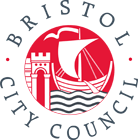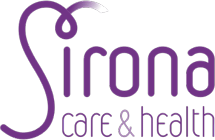Joint Health Integration Team response to West of England joint spatial plan
- 17th February 2016
Bristol Health Partners Health Integration Teams (HITs) have made a joint response to the West of England’s joint spatial plan consultation. In response to housing pressure in the Avon sub-region, the area’s four
local authorities, Bristol, North Somerset, South Gloucestershire and Bath
& North East Somerset, have come together to create plan that will shape
physical development, investment and infrastructure for the next 20 years. This
is a significant strategic process and the results will be codified in the
West of England joint spatial plan and an associated joint transport study.
Estimates indicate that the area needs 85,000 new homes by 2036. The focus
of the plan and associated study is delivery of the necessary housing and employment,
alongside improved transport and other infrastructure.
Marcus Grant, Supporting Healthy Inclusive Neighbourhood Environments Health Integration Team (SHINE HIT) Co-Director and one of the leads on the joint HIT response, said:
“With an eye on the wider determinants of health, this housing and
employment might be delivered in a manner blind to its subsequent impact on
population health, or in a way that seeks to support health. Even if all the homes are built to a high standard, physical design at the
neighbourhood scale could see a series of far-flung car-dependent communities,
with individuals isolated and with few local amenities. Or, at the same cost,
through choice of location, layout and local form, urban design could use a
health lens and be used to facilitate the creation of places where a health
supporting lifestyle is the norm through the life-course. Such healthy urban
planning and design can provide good access to local facilities such as parks
and allotments and can support viability of local shops and services.”
Bristol Health Partners decided to use the recent consultation stage of the
West of England joint spatial plan to provide a strong evidence-based response
that would highlight the role of planning and design in supporting population health.
With co-ordination from the SHINE HIT, researchers from the Dementia, Active People: Promoting Healthy Life Expectancy (APPHLE) and Child Injury Prevention and Injury Care
(CIPIC) Health Integration Teams all provided material for the response.
The result was a 40 page document highlighting the ways in which, within
the strict limitations of the planning process, primary public health of future
populations could be supported. All the HITs provided evidence, which was
contextualized within a wider determinants of health approach and submitted in
response to a number of questions posed for contributors to this consultation.
This response is just a starting point. It is the first stage in a long
process that will eventually lead to the development and establishment of a
number of new communities in the sub-region. This high level joint plan will
eventually provide a statutory and materially legal basis for local authority
plans. These will then provide the framework within which developers will seek
planning permissions and eventually house builders will build. Implementation
is a rocky road, with many stakeholders. The ambition for Bristol Health
Partners is that this response places a health marker into the process at a
high level; a marker saying that a health lens must be used throughout this
tortuous process, at each stage, from strategic, to local authority and then
down to each neighbourhood and site plan.
In a nutshell, the Bristol Health Partners response asks that for the
communities anticipated to live in these growth areas – good health, already
accepted as a plan outcome, will be delivered in a methodical and
evidence-based manner, and not be just a warm statement as already provided in
the vision.






